- Call us: 01444 237070
- Contact Us
- Stores
- Sign In / Register
-
- Back
- Used Cameras
- Used Accessories
- Used Lenses
- Used Video
- Used Film Equipment
- Used Stock Alert
- Used Blank Test
- Sell or Part Exchange
- Used Clearance
- Recently Added Used Equipment
- Park Picks
- All Used Black Friday Deals
- Faulty
- Trade-In
- Blog
- New in
- Call us
- Contact us
- Stores
- Sign in
- Categories
- Tips & Inspiration
- Reviews
- News
- Events
- Features
- Buying Guides
- Competitions
Sony 100-400mm F4.5-5.6 GM OSS Review
In this review, we explore why the Sony 100-400mm F4.5-5.6 GM OSS lens, which launched back in April 2017 is still one of the most popular Sony telephoto zoom lenses. With such a long lifespan this G Master zoom represents the pinnacle of Sony's optical innovation, but what can it do for your photography?
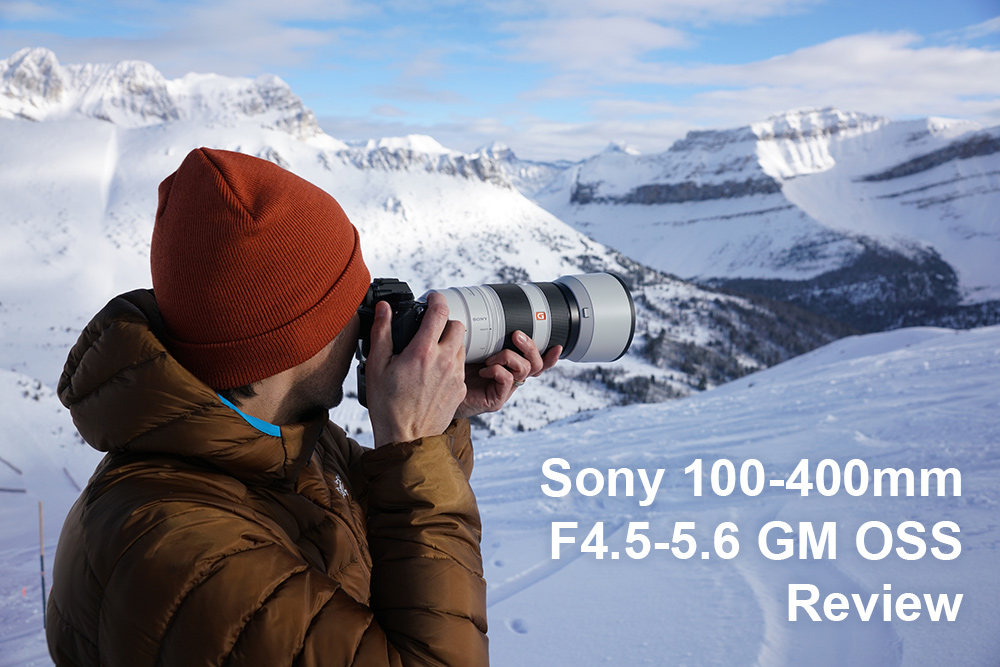
Find out everything you need to know in our comprehensive Sony 100-400mm F4.5-5.6 GM OSS review that goes beyond specifications, focusing on the lens's practical applications and performance in real-world situations.
We’ve included lots of sample images and 100% crops from this 100 400mm Sony lens, in order for you to judge for yourself just how sharp it is, for everything from wildlife and birds, to landscapes, close-ups and sports photography.
Sample images
For this lens review we’ve used a combination of officially supplied, and Nick Dautlich’s photos, so that you can see a diverse selection of Sony 100-400mm sample images. These cover different subjects, lighting conditions and seasons, all of which this lens is perfectly equipped to handle.
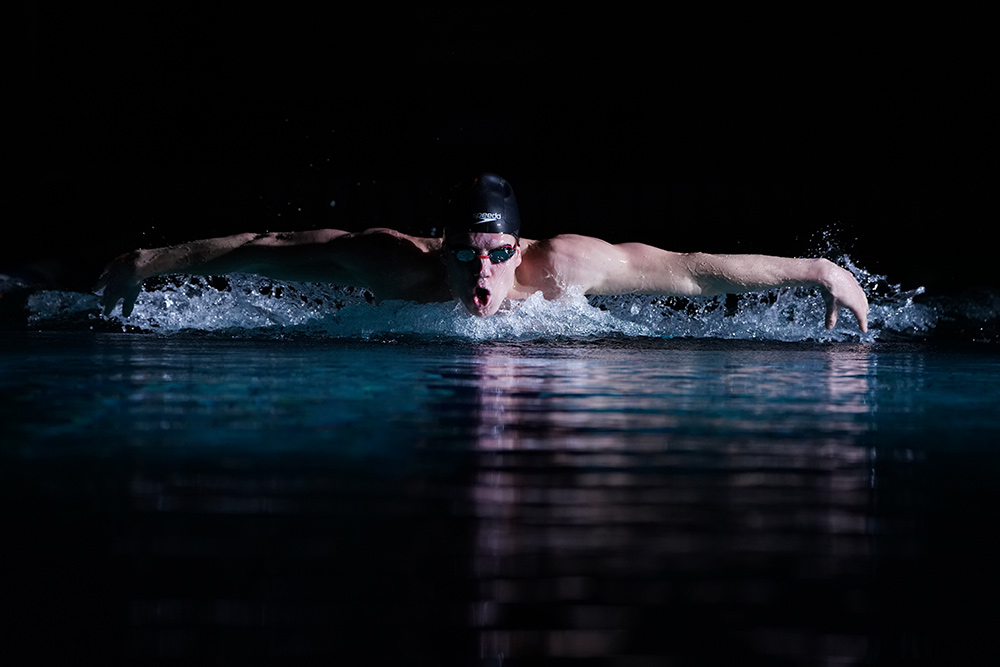
Swimmer, taken with Sony A9 @ 232mm. Camera settings: 1/800 sec. f/5.6. ISO 3200
Introduction to the Sony FE 100-400mm GM Lens
When the Sony 100-400mm F4.5-5.6 GM OSS launched in 2017 it made a significant leap in telephoto lens technology. The current £2,249.00 price tag of this G Master zoom reflects its status as a progressional-grade option for enthusiasts and professionals who require a versatile zoom capable of delivering exceptional image quality.
With such an illustrious history the Sony 100-400mm GM has proven its mettle in countless situations, from capturing athletes and wildlife worldwide, to winning the TIPA WORLD AWARDS 2023 as the best mirrorless zoom lens.
It was one of my first Sony E mount lenses, which I purchased back in 2018, and has become my most prized lens over the course of the next few years, complementing the newer FE 70-200mm F2.8 GM OSS Mark II Lens, when extra reach is required.
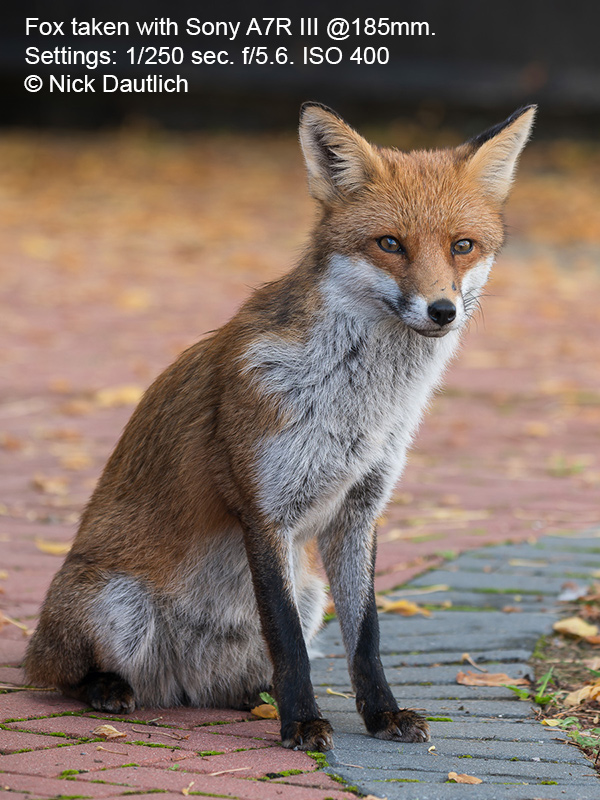
This fox stopped to pose for me. Cropped image.
key features
When this lens launched in 2017 it was future proofed through an advanced optical design, fast focus system and high magnification. Close minimum focusing extends its versatility for close-up tele-macro shots, as well as extending out to 800mm when using a 2.0x lens teleconverter.
Highlights include:
- 22 lens elements in 16 groups including Super ED glass and ED (extra-low dispersion) glass
- High resolution with excellent detail and sharpness
- Compatible with full-frame FE and crop sensor Sony mirrorless cameras
- Fast and quiet AF thanks to double linear motor and DDSSM (Direct Drive SSM) drive
- Optical Steady Shot (OSS) with two modes
- Variable aperture f/4.5-5.6 – f/32-40
- 9-rounded aperture blades
- Minimum focus distance 0.98m, maximum magnification 0.35x
- Three customisable focus hold buttons
- Fluorine coated front element
- 77mm lens filter thread
- Compatible with teleconverter SEL14TC (1.4x) and SEL20TC (2.0x)
- Dust and moisture resistant design

Starting line, taken with Sony A7R II. Camera settings: 1/1600 sec. f/5.6. ISO 200
What can you shoot with the Sony 100-400mm GM Lens?
With telephoto to super telephoto reach, up to 0.35x magnification and teleconverter compatibility, the Sony 100-400mm GM Lens is versatile enough to capture near to distant subjects without switching between lenses. Additionally it weighs just 1359g and measures 205mm before zooming, making it an appealing choice for numerous genres, including:
- Sports and action
- Bird and wildlife photography
- Landscapes and for isolating distant details
- Close-up tele-macro style images
- Aviation
- Portraits, pet photography and lifestyle
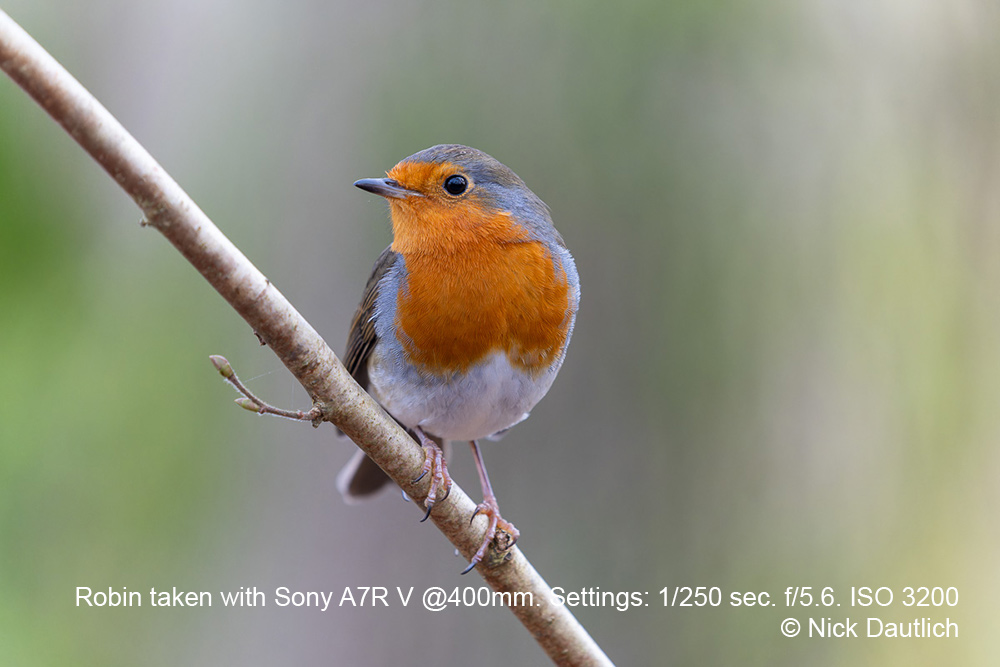
Uncropped image of robin with beautiful subject separation
Image quality
Undoubtedly image quality is a primary consideration when investing in a high-end zoom lens priced at over £2k like this Sony 100-400mm G Master. In my view, this lens unquestionably delivers some of the best image quality among any zoom lenses, particularly considering its slightly narrower aperture constraints.
By incorporating two ED (Extra-low Dispersion) glass elements and one Super ED glass element into its optical design, this lens minimises axial chromatic aberration, which can cause a loss of resolution in telephoto lenses. The combination of special glass results in clear and well-controlled images, with exceptional detail and overall high image quality. It has absolutely no problem resolving the detail from the 61MP sensor in the Sony A7R V, which I am fortunate to use as my primary camera.
Other factors which contribute to quality end results are the 9-bladed aperture design, which renders smooth out-of-focus areas and nice, rounded bokeh, without onion rings or outlines. Another plus is the Fluorine coated front element, which makes it easier to clean the lens. It also employs Sony’s Nano AR Coating, which reduces the effects of flare and ghosting when shooting towards the sun, or other bright light sources.
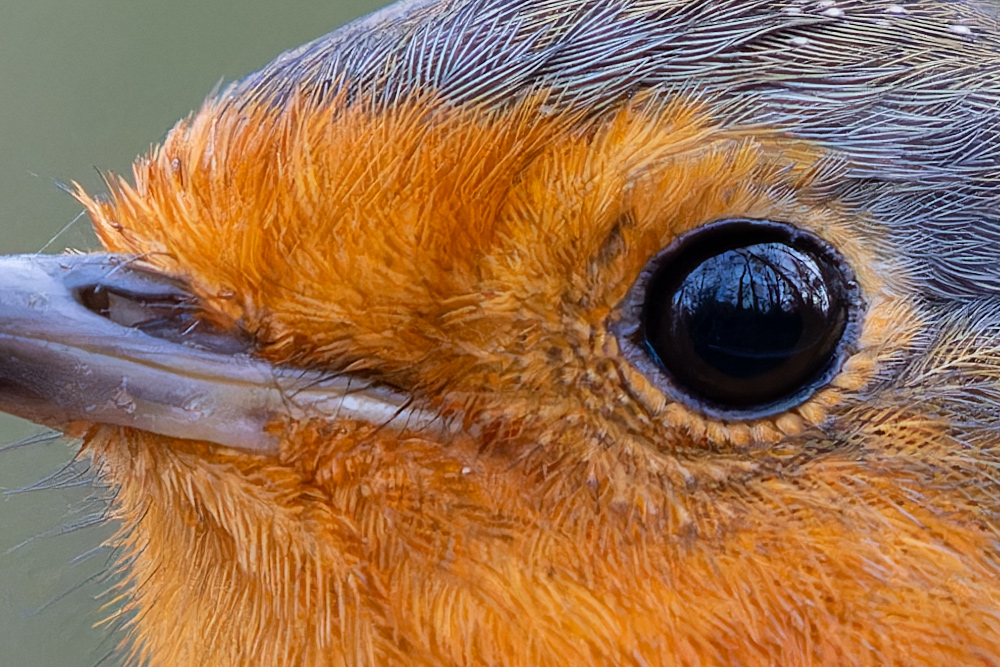
100 percent crop of previous robin image with incredible detail and sharpness
Having captured countless backlit sunrise and sunset images with this lens, I can confirm that it does indeed resist flare very well, although I do tend to mount the included ALCSH151 lens hood to help control internal light reflections.
Distortion is all but eliminated if you have camera corrections turned on, and any remaining barrel distortion can be eliminated in post production by switching on lens corrections.
If you’re looking for high resolving power with sharp results, especially in the centre of the image, look no further than the 100-400mm from Sony, which will reward you with pin sharp subjects and beautifully smooth defocus areas.
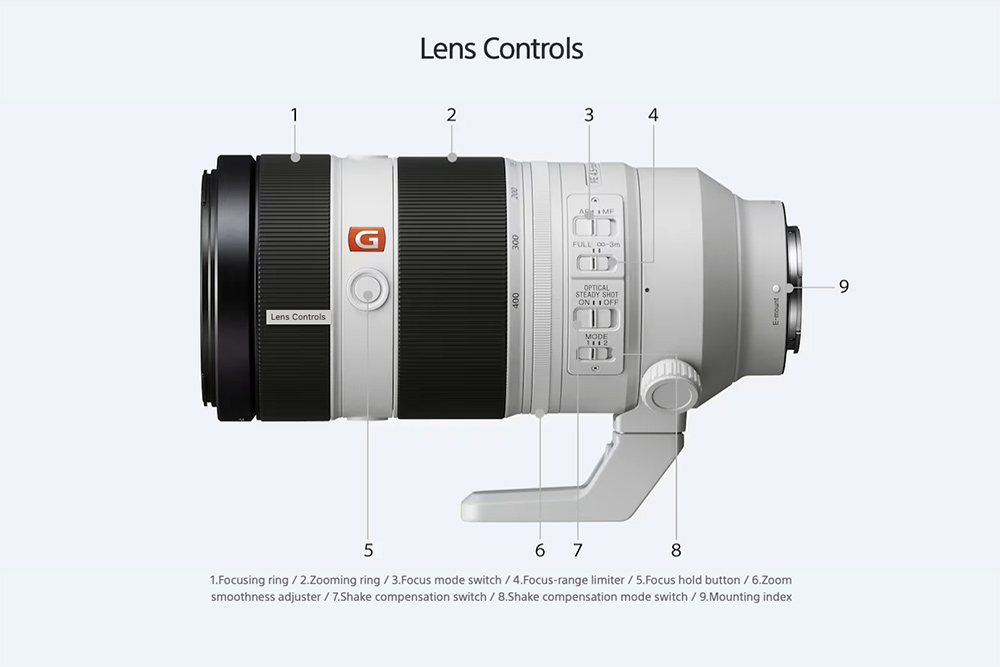
Image courtesy of Sony showing lens barrel controls
Material, durability, and ergonomics
As you would expect from a G Master lens, the 100 400mm is extremely well built using hard plastics and a metal lens mount, which is customary for high-end Sony lenses. The 1476g Sony 100-400mm weight (with foot), feels solid in the hand, without being too heavy or cumbersome.
Aside from the optical design it has all of the other traits of a GM lens, with a fluorine coating to reduce dirt and smears, plenty of lens barrel controls and comprehensive weather sealing.
The lens does extend when zooming, which increases its size considerably, however I prefer to have a compact lens for transport which extends, rather than a longer lens, which maintains its size through an internal zoom. You can tighten the zoom ring to prevent any creep, and despite occasionally being difficult to get your precisely desired setting, it certainly does the job.
On my lens I’ve added a proper lens foot with an Arca-type plate in order to mount the lens directly onto a tripod without needing an additional tripod plate. It does sometime warrant a tripod or monopod, depending on the subjects you’re shooting, which is especially true when capturing landscapes, in order to reduce the ISO. I’ve captured many long exposures with this lens while tripod mounted, and as long as there’s no wind and you use a timer or remote shutter release, you can expect pin sharp results no matter how long the exposure.
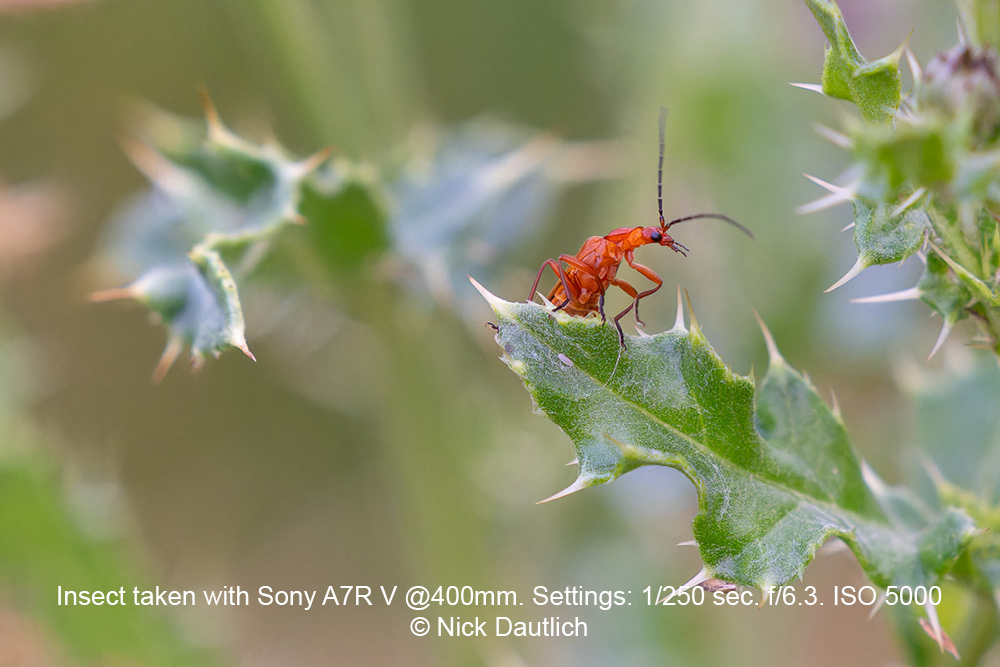
Cropped image of insect, highlighting high magnification and detail
Autofocus speed and real-world handling
Autofocus has been consistently fast and accurate on my previous A7R III and current A7R V camera. When tracking moving subjects the lens does an excellent job of keeping up with the latest AI-driven AF technologies found in Sony bodies, and finds human and bird / animal eyes, and many insects for close-ups.
Certain insects are not recognised, however the lens benefits from direct manual focus override, which can be set in newer Sony cameras. This is an excellent feature which allows you to manually adjust focus to approximately acquire your subject, before re-engaging autofocus and leaving the camera to pick up the subject.
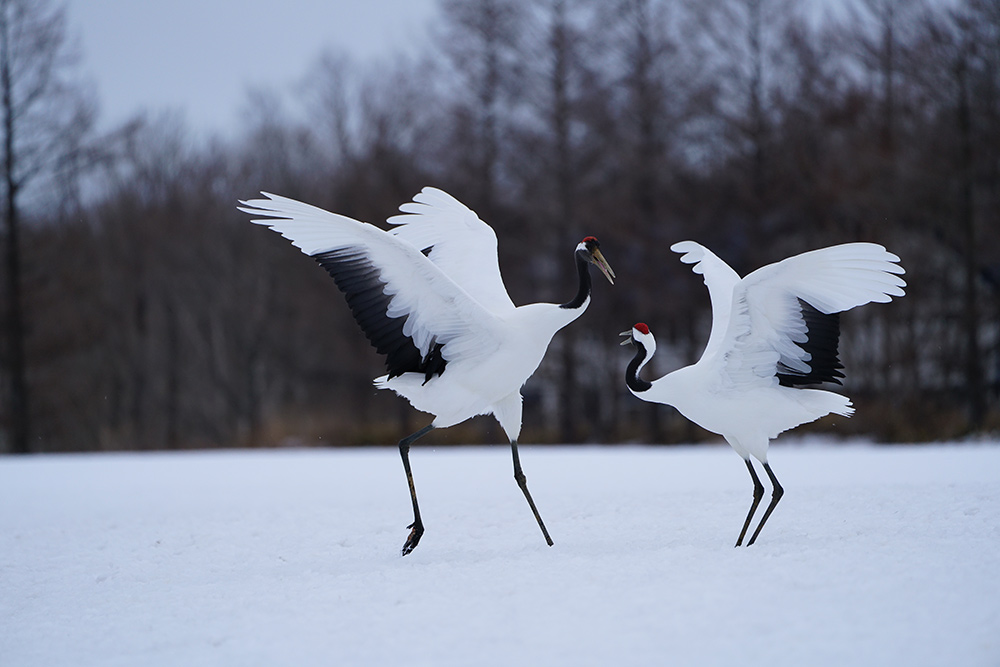
Birds taken with Sony A7R II. Camera settings: 1/1250 sec. f/5.6. ISO 400
Performance in the field
This is a tough super telephoto lens, which will handle almost anything you can throw at it. The 100-400 Sony GM handles very well in the field, with easy access to controls, a smooth zoom ring once adjusted, and nicely dampened manual focus ring when needed.
Although equipped with optical image stabilisation, I've noticed that maintaining sensible shooting speeds is crucial to ensure sharp results with this lens. Its substantial size when fully extended, does make it more vulnerable to shake and wind interference, which emphasises the importance of best practice, especially at longer focal lengths.
Best practice isn’t unique to this lens by any means, and blur or shake is more noticeable when working with longer lenses. Keep your eye on exposure speeds, and you can use AI noise reduction software to remove grain if shooting at very high ISOs.
Thanks to the 4x zoom range from 100-400mm, this lens is equally adept at isolating distant details, as it is at capturing closer portraits. The aperture does impact subject background separation in some situations, but if you can move yourself or the subject it’s possible to achieve perfectly adequate separation.
100-400 is enough reach for birds, wildlife and similar subjects, however there are naturally times when you max out the zoom, which is inevitable with any telephoto. At that point you can either punch in with APS-C mode if shooting on a full-frame camera, or add a teleconverter, which isn’t possible with third party lenses.
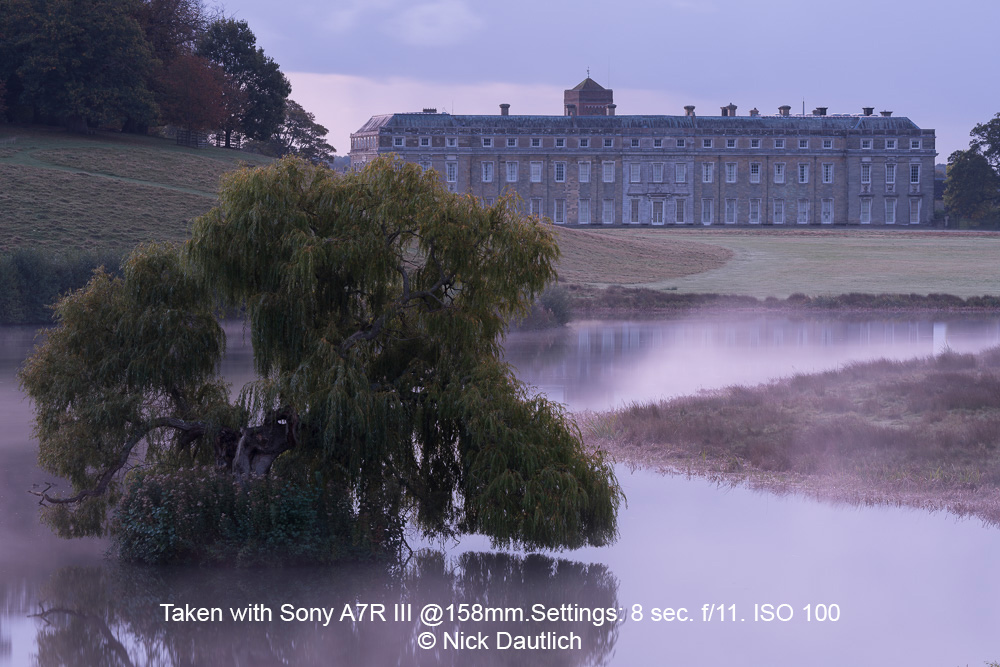
Misty scenecaptured at f/11 from a tripod
How does it compare to other telephoto lenses for Sony?
Sony has a number of telephoto and super telephoto options, which cover some of the 100-400mm zoom range, but none which directly compete. Several 70-200mm lenses are available depending on your budget and needs, along with the FE 200-600mm F/5.6-6.3 G OSS Lens, which is bigger and heavier.
To find comparable alternatives we have to look to the third party manufacturers. Sigma and Tamron manufacturer options like the Sigma 60-600mm and 150-600mm lenses, and the Tamron 50-400mm F/4.5-6.3 Di III VC VXD, however these are limited by the lack of teleconverter availability.

Uncropped image of squirrel
Accessories
The 77mm filter thread is extremely common, enabling you to use existing or relatively cost-effective camera lens filters and filter systems as necessary. The Hoya 77mm UX II UV Filter is one of the most budget-friendly options available on the market, and a UV filter is beneficial at longer focal lengths, as well as serving to protect the front element from damage.
Other useful accessories for this model include the ZEISS Lens Cleaning Kit, 3 Legged Thing Swirls Wrapz Medium with Nano technology, and a solid tripod or monopod, if you want additional stability while shooting with the lens.
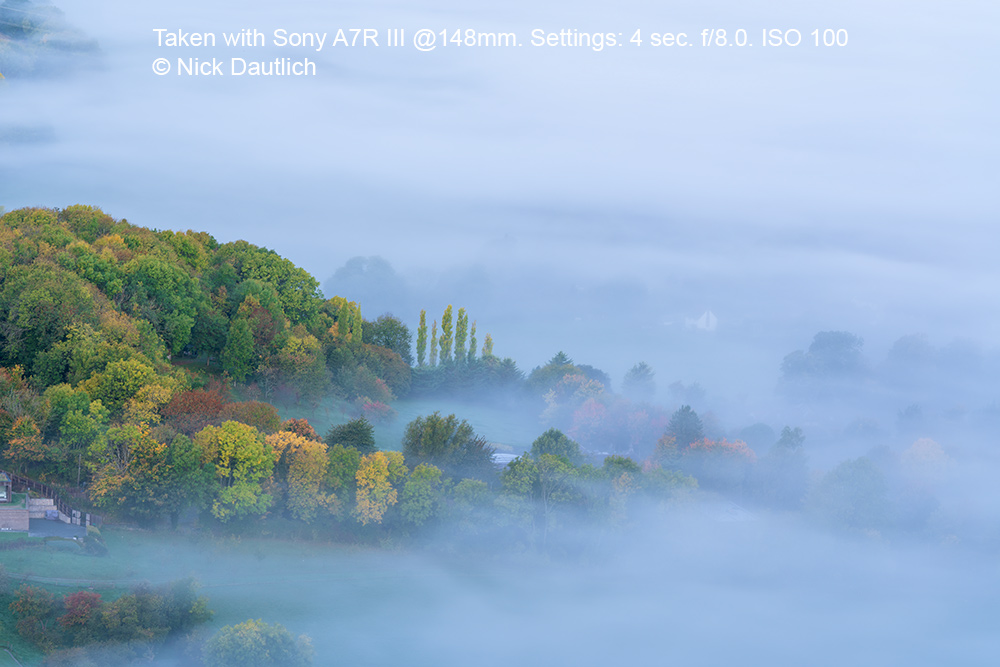
The Sony 100-400mm F4.5-5.6 GM OSS is one of my all-time favourite lenses, which is most frequently found mounted to my camera. Its versatility in capturing a wide range of subjects, particularly nature and landscapes, which are my personal favourites, makes it an indispensable tool in my photography arsenal.
Results are incredibly sharp and detailed, especially in the centre of the image, and it’s light enough to handhold for extended periods in the field. Although it will inevitably be replaced at some stage, for the time being this is Sony’s most versatile lens in its class.
Having been around for some years it is possible to find a used Sony FE 100-400mm F/4.5-5.6 GM OSS lens relatively frequently, so it’s worth checking with reputable second-hand stockists.
If you prefer to own your glass from new, reserve the Sony FE 100-400mm F/4.5-5.6 GM OSS Telephoto Zoom Lens today, and discover how it can help to elevate your long lens photography with brilliant results.
Share this post:
By Nick Dautlich on 25/02/2024
Nick Dautlich
Senior Content Writer and Product Reviewer
Nick Dautlich is the Senior Content Writer and Product Reviewer at Park Cameras, with over 15 years of photography experience. A Sony Imaging Professional and expert reviewer, Nick has worked with major brands such as Canon, Sony and Nikon. His work is also featured on Vanguard World UK’s website, Capture Landscapes, and Shutter Evolve. Nick’s photography includes National Trust projects and magazine covers and he is passionate about landscapes and storytelling. Nick also enjoys hiking and teaching his children about nature. Learn more on his profile page.

Trade in your old equipment
Fast and easy trade in service ensures your old gear is collected efficiently and you are paid quickly! It's very simple to trade in your unwanted photography gear. Just head over to our dedicated Sell or Part Exchange page, fill out the details, and we'll get back to you with an offer for your old gear. Take the cash, or put it towards the cost of your new gear. It's up to you! Find out more
sign up to the newsletter
Keep up to date on the latest photography news, events and offers. Sign up now
